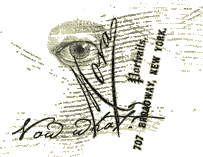Navigation
IntroductionFascism and the Jews
Anti-Semitic Laws
Mussolini and the Jews
Italian Culture
Cultural Myths of the Jews
Biological Racism
Terms
Conclusion
Sources
Recommended Reading


Conclusion
Before any conclusions can be drawn, a look at the overall affects of the Italian Holocaust must be taken into account. The Nazis killed fewer than twenty percent of the Italian Jews.1 After 1938, when the government passed anti-Semitic laws, the Italians did not pursue the enforcement of these laws with the same rigor as other countries.2 Many Italians did not cooperate with the German Jewish extermination policies. They impeded, obstructed, and thwarted efforts to round up Jews.3
However, other groups helped the Jews based on a national identity instead of a racial one. The Danes and the Bulgarians made efforts to help the Jews that identified as Danish or Bulgarian; yet, they handed over foreign Jews to the Nazis.4 Furthermore, the Danes and Bulgarians acted with the government instead of against it as the Italians did.5 Through interviews and stories, it is clear to see that individuals helped the Jews survive the Italian Holocaust. In addition, they worked to save more than just the Jewish Italians.
The Italians also helped the Croatian Jews and the Jews in southern Greece and in France, where the Italian army was stationed.6 Eight thousand Jewish refugees came from Germany (including non-German Jews) when the border controls were still tight. They were still allowed to enter Italy.7 This occurred when England and the United States of America refused to accept Jewish refugees beyond their quotas.8
Two thousand of the five thousand Yugoslav Jews who sough refuge in Italian-occupied zones were able to escape to the Italian mainland.9 This is because the Italian military had a "free hand" in the occupied territories of France and Yugoslavia, which it put to use by rescuing thousands of people.10 From Italy, 65,000 Jews went to England while 25,000 went to France.11 The anti-Semitic laws, in part, caused these shifts; however, many Jewish people were able to escape to safety away from the hands of the Nazis. In 1939, the Foreign Ministry of Italy granted tourist visas that gave about five thousand of the aforementioned Jews a chance to escape to England or France.12 Mussolini shut it down when he discovered it helped non-Italian Jew.13
However, the Jewish population of Italy was very small, approximately 35,000 people. More than 8,500 of them were deported or killed.14 Of the 4,500 arrests documented, a little less than fifty percent of them were carried out by Italians alone.15 To say that all Italians helped the Jews would be a huge mistake.
The majority of the help for Jews came from lower-level civil servants, military men, etc.16Since the Italian government passed anti-Semitic laws, the Italian individuals were the ones to reach out and save people. This included impeding round ups, warning victims of their arrests or captures, dragging their feet on orders, and even rounding up money to help buy supplies. The fact that people on the lower level continued to do this despite the authoritarian rule shows that public opinion can modify a serious authoritarian regime like Fascism.17
To say that the Italians helped Jews because they were Italians first does not hold true, as many non-Italian Jews were helped. To say that the Italians helped foreign Jews due to their dissatisfaction with the authoritarian government would also be false, as the help people gave came before the eminent dissatisfaction with Fascism in 1942. Many of the people who helped Jews had never seen a Jew, given the small population of them in Italy. It could be simply because the Jews were oppressed and therefore in need of help that lead many Catholic-indoctrinated Italians to reach out a hand. However, the unique situation of Italy in the Holocaust still needs further study as to the intensions of the population.
Footnotes
- Bookbinder 96
- Bookbinder 100
- Bookbinder 102
- Bookbinder 102
- Bookbinder 96
- Bookbinder 102
- Voigt 141
- Rothchild 107
- Voigt 143
- Voigt 152
- Voigt 143
- Voigt 146
- Voigt 146
- Stille 20
- Stille 21
- Fargion 112
- Rothchild 158
For more information on these footnotes, please see the sources.

© Kylie McCormick, Mount Holyoke College 2008.
